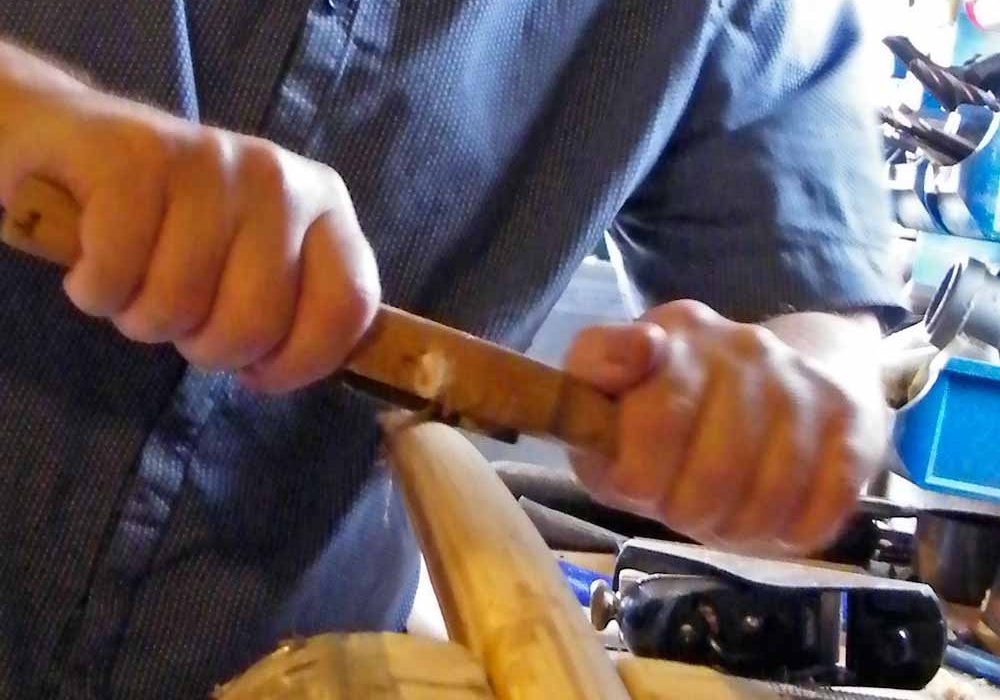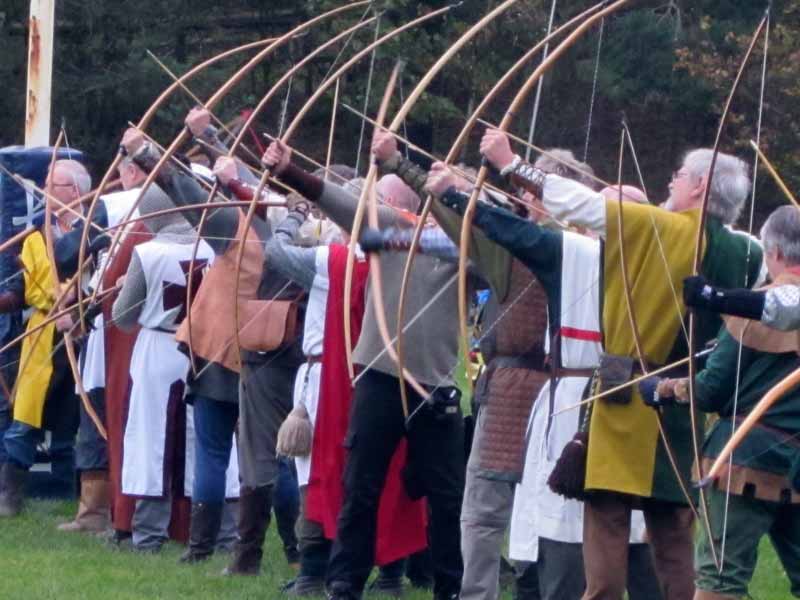
Right on Target – The English Longbow
by Northern Life
Six hundred years after the Battle of Agincourt – won by the English longbow against the French – David Hall meets a man who is keeping the legendary weapon alive… in Normandy!
When depression hit Colin Sanderson he turned to a boyhood trait to make a living; manufacturing tailor-made bows and arrows.
As a trained sheet metal worker and fabricator he had bought a home in Normandy and needed time to renovate it, so his occasional trips to France from his home in Nelson, Lancashire, made getting a full-time job difficult.
But as a youngster he had revelled in The Adventures of Robin Hood being glued to the television for every episode of the series featuring Richard Green as the man in Lincoln green. He had always had a love for mediaeval history and bows and arrows in particular, creating his own weapons from scraps of wood.
As the turning point in his life arrived, he had already made British longbows with increasing skill, and a desire for perfection. That experience provided a living. Etelon Longbows was born, taking the name from the village in Normandy where he has his other home.
Now, while still occasionally working on his French house with a view to moving there one day, he makes a living creating custom-built longbows, taking into account the user’s height, and the
distance needed to pull back the drawstring effectively. Each one can take up to 40 hours of careful work.
Hundreds of bows later, his products are increasingly in demand with some archers returning, trusting him to improve their accuracy and distance. A good longbow in the right hands can shoot for up to 300 yards.
- Choosing a suitable piece of wood
- Colin smooths a bow
- Colin smooths a bow
- Carving a piece of buffalow horn
- Colin shows how arrows can pierce metal
He uses a variety of wood – carefully bought from importers – to ensure his longbows are of good enough quality with the thin layers of different coloured woods bonded together to form a pleasing shape which give target-hitting performances.
His increasing skill, ironically, depends on his own ability as an archer remaining fairly static.
“If I was improving my own performances too much I would find it difficult to grade the weight and strength of the longbows I make. As my ability has remained fairly static I can more easily gauge the varying changes needed to adapt the bows I make for other archers,” he said.
It is also ironic that he is a 52-year-old Englishman, with a house in Normandy, selling longbows in Britain and France on the 600th anniversary of the battle of Agincourt when the British longbow came into its own and was the decisive weapon which enabled the vastly outnumbered English Army of 6,000 to beat at least 30,000 French soldiers. The actual numbers vary according to the chronicler, with some putting the French army at anything up to 50,000.
It was the English archers’ ability to fire far greater distances than their opponents which won the day. A well-trained archer could fire up to 15 arrows in a minute and, as Bernard Cornwell points out in his magnificent novel, Azincourt (using the French name for the village), that meant something like a thousand arrows a second, devastating the advancing French troops. That St Crispin’s Day battle, October 25th, which famously figures in Shakespeare’s Henry V, marked the longbow as the overwhelming weapon of the English.
In fact the Agincourt Alliance, an Anglo-French re-enactment group is hoping to “recreate an arrow storm with at least 1,000 archers,” to commemorate the day. They were asking for a minimum of 1,000 archers to try to recreate Henry V’s first arrow volley made in 1415. Arrows could drive through metal armour, as proven by a former advertising sign on a sheet of thick metal which Colin proudly showed me, containing many holes made by his own arrows.
“People often claim arrows could not puncture armour – but they can, and I have proved it,” he pointed out.
He does not now make arrows to sell, finding that they are time-consuming and other companies make them cheaper. But he still enjoys shaping some for his own use with his former skill in metalworking coming to the fore when creating the arrow heads.
The creator needs, and has, an expert knowledge of wood to get the right materials for his bows with the old-style yew often outflanked by tougher and more durable woods from all over the
world. He also needs a sharp eye and skilful hands for other parts of the bow. He ensures that a variety of colours gives an attractive finish to each weapon – three different woods being bonded
together to form the bow.
At each end the carefully carved tips – or ‘knocks’ – into which the bowstring is clipped, are mostly made from buffalo horn which has to be trimmed and shaped.
Even the bowstring is hand-made – Colin weaves together 12 threads of a cord which is so strong is used in the production of bullet-proof vests.
With the English longbow becoming more popular – despite not being one of the choices for the Olympic shooting events – there was a time when all Englishmen were required to spend time each day practising their archery skills. In fact Edward VIII actually banned other sports, including football, so that it would not detract from their training with the bow.
It’s no longer law, of course, but there are thousands who do find relaxation in shooting arrows. Lancashire Archery Association has nearly 30 affiliated archery clubs and Yorkshire more than 60. While many of those thousands of archers use different types of bows, many with additions to aid accuracy, there are still many who prefer the good old longbow.
So, the English longbow lives on, despite Olympic rejection. And Colin expects to continue his business for years to come as interest grows.
Agincourt Comes to Preston
The Preston-based Samlesbury Longbow Archers are organising a special Agincourt Day Shoot with everyone in costume. Members of the club, which is more than 100 years old, use only the longbow.
They meet at Preston Grasshoppers Rugby Club and will be celebrating their tenth Agincourt Day shoot on Sunday October 25, the 600th anniversary of the battle.
Archers will assemble from many parts of the country to tackle targets depicting English and French knights and shields. Top archer gets a battle-axe with other prizes for the best archer at each of the 16 targets. There is also a prize for the best-dressed archer.
Shooting begins at 10.15 am after mulled wine and the Henry V’s Shakespearean St Crispin Day speech is given. There is a lunch before the prizegiving.

Samlesbury Longbow Archers in Agincourt anniversary meeting








